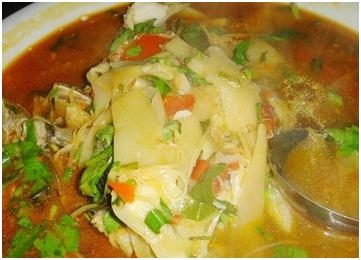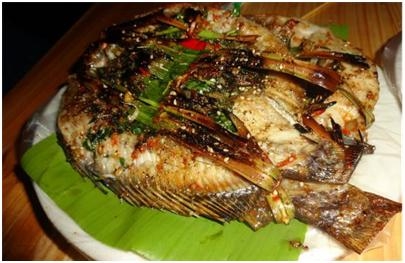代寫B31DG、代做C/C++程序語言
時間:2024-03-08 來源: 作者: 我要糾錯
B31DG - Assignment 1
B31DG - Assignment 1 1 1.0
Table of Contents
Revision History ..................................................................................................................... 1
Overview ............................................................................................................................... 1
Application Requirements ...................................................................................................... 2
Control Inputs .................................................................................................................... 2
Definition of Output Signal Timing ....................................................................................... 2
Calculation of Output Timing Parameters ............................................................................ 3
Example Calculation – James Herd.................................................................................. 3
Alternative DATA Output Behaviour...................................................................................... 4
Development Environments ................................................................................................... 5
Deliverables........................................................................................................................... 6
Appendix 1: Output Timing Diagram........................................................................................ 7
Appendix 2: Hardware Configuration....................................................................................... 8
Appendix 3: PDF Report.......................................................................................................... 9
Revision History
Revision Date Author Notes
1.0 26/02/2024 Kieran O'Leary Initial version.
Overview
The objective of this assignment is to develop a bare-metal software application on an
embedded system-on-chip (SoC). You will be required to develop a software application that
will generate a pair of periodically repeating digital signals using an Espressif ESP32-based
module.
The on/off state and nature of the periodic signals are to be controlled using two push buttons
connected to the ESP32.
The application is to be first implemented using the Arduino IDE and then, to be reimplemented
directly using the Espressif Internet of Things Development Framework (ESP-IDF).
An Integrated Development Environment (IDE) of your choice may be used with the ESP-IDF.
Visual Studio Code (VS Code) with the ESP-IDF extension is a convenient and realistic
development environment.
You will be required to create and use a Git repository (hosted on GitHub) for this assignment.
One of deliverables for the assignment will be a tagged release of the Git repository.
B31DG - Assignment 1
B31DG - Assignment 1 2 1.0
Application Requirements
The application will produce two digital outputs from the ESP32, i.e. the DATA (Signal A) and
SYNC (Signal B) signals.
The run-time operation of the system will be controlled using two push-button inputs to the
ESP32, i.e. the OUTPUT_ENABLE and OUTPUT_SELECT signals.
At compile-time, a C pre-processor directive should be implemented to determine whether the
application should be compiled with PRODUCTION timing, as specified below, or DEBUG
timing, which slows down all timing parameters by a factor of 1000. This will permit visual debug
of the application using LEDs alone. A conditional code-compile should be demonstrated.
Control Inputs
The two push button inputs are momentary switches. Momentarily pressing either push button
should result in a sustained state-change. The application should not require a push button to
be continuously pressed. The application should always be aware of its operational state.
Input Signal Description
OUTPUT_ENABLE Connected to Push Button 1 (PB1), the OUTPUT_ENABLE input signal
enables or disables the DATA (Signal A) output.
OUTPUT_SELECT Connected to Push Button 2 (PB2), the OUTPUT_SELECT input signal
controls whether the Normal or Alternative Waveform is output on the
DATA (Signal A) output.
Table 1. Control Input Functionality
Definition of Output Signal Timing
The timing diagram and table below describe the DATA and SYNC output signals in detail.
Figure 1. Output Timing Diagram (for Normal DATA Waveform)
Parameter Description
a Duration of the first pulse on-time (TON(1)) in a DATA waveform cycle.
b Duration of each pulse off-time in a DATA waveform cycle.
c Number of pulses in a DATA waveform cycle.
d Idle time between the end of the final pulse off-time and the start of the next
SYNC pulse.
TSYNC-ON The SYNC pulse on-time duration.
This is specified as 50us (with PRODUCTION timing).
The SYNC pulse period, i.e. TSYNC is dependent on the other parameters.
Table 2. Output Timing Parameter Descriptions (for Normal DATA Waveform)
B31DG - Assignment 1
B31DG - Assignment 1 3 1.0
Calculation of Output Timing Parameters
The first four letters of the developer's surname are used to calculate the Output Timing
Parameters. Each of the first four letters in the surname is mapped to a number. If the surname
consists of less than four letters, the final letter is repeated until four letters are available for
mapping. The alphanumeric mapping and parameter definitions are shown in the tables below.
Letter Letter Numerical Mapping
Table 3. Alphanumeric Mapping
Parameter Definition
a First Letter Numerical Mapping x 100us
b Second Letter Numerical Mapping x 100us
c Third Letter Numerical Mapping + 4
d Fourth Letter Numerical Mapping x 500us
Table 4. Output Timing Parameter Definitions (for Normal Waveform)
The on-time duration of the first pulse is defined by the parameter a. Subsequent pulses have
an on-time that is determined by the following formula:
TON(n) = a + ((n-1) x 50us), where 2 ≤ n
Example Calculation – James Herd
To illustrate how the Output Timing Parameters are calculated, an example is provided. The
developer's name is assumed to be James Herd.
Parameter Numerical Mapping (for James Herd) Calculation (for James Herd)
a “H” maps to 8 8 x 100us = 800us
b “e” maps to 5 5 x 100us = 500us
c “r” maps to 9 9 + 4 = 13
d “d” maps to 4 4 x 500us = 2000us = 2ms
Table 5. Output Timing Parameter Calculations (for James Herd)
B31DG - Assignment 1
B31DG - Assignment 1 4 1.0
Alternative DATA Output Behaviour
The Push Button 2 (PB2) input allows a user to change the behaviour of the DATA output signal.
The OUTPUT_SELECT signal, connected to PB2, allows the user to toggle between the Normal
and Alternative DATA output behaviour.
There are four possible Alternative DATA output behaviours, only one of which will be
implemented in the application. The four possible behaviours are described below.
Option Description
1 Remove the final 3 pulses from each data waveform cycle (i.e. c-3 pulses in a
data waveform cycle) until the Output Select push button is pressed again.
2 Generate a reversed form of the data waveform (from the largest pulse to the
shortest) until the Output Select push button is pressed again.
3 Insert an extra 3 pulses into each data waveform cycle (i.e. c+3 pulses in a
data waveform cycle) until the Output Select push button is pressed again.
4 Half the b and d time intervals until the Output Select push button is pressed
again.
Table 6. Definition of Possible Alternative DATA Output Behaviours
In a similar manner to the calculations for the Output Timing Parameters, the Alternative DATA
Output behaviour is dependent on the developer's surname. The behaviour is selected using the
fifth letter of the developer's surname. If the surname consists of less than five letters, the final
letter is repeated until a fifth letter is available.
The appropriate behaviour to use for a given surname is determined by the following formula:
Option Number = (Fifth Letter Numerical Mapping % 4) + 1
To illustrate how the Alternative DATA Output behaviour is selected, an example is provided. The
developer's name is assumed to be James Herd. As the surname only as four letters, the final
letter is duplicated for the purposes of numerical mapping.
Numerical Mapping (for James Herd) Alternative Behaviour Selection (for James Herd)
“d” maps to 4 (4 % 4) + 1 = 1, therefore Option 1 is selected
Table 7. Alternative DATA Output Behaviour Selection (for James Herd)
B31DG - Assignment 1
B31DG - Assignment 1 5 1.0
Development Environments
The above application must be implemented in two different software development
environments:
1. The Arduino IDE
• Support for the ESP32-based hardware must be added through the Arduino
Board Manager.
2. Any IDE that the allows you to directly utilise the Espressif Internet of Things
Development Framework (ESP-IDF).
• Visual Studio Code (VS Code) with the ESP-IDF Extension installed is an
appropriate solution.
B31DG - Assignment 1
B31DG - Assignment 1 6 1.0
Deliverables
The following deliverables must be submitted for this assignment:
1. A zip file, generated by creating a tagged release, of your git repository within GitHub.
1. The git repository must include your source code for both development
environments, i.e. an Arduino .ino file as well as a collection of C source and
header files.
2. The repository should be well-structured.
i. src, bin, docs, and tools folders may be expected (though not required).
ii. A .gitignore file should be considered to exclude build files.
iii. A readme.md file should be considered to explain the repository
structure.
2. A short video showing your hardware setup running your application.
3. A PDF report that includes the following:
1. Calculation of your application parameters.
2. Oscilloscope Screen Captures:
i. Show both DATA and SYNC digital output signals.
ii. Oscilloscope to be triggered on Sync signal.
iii. Horizontal timebase selected to show two Sync Pulses in image.
3. Images of Hardware Circuit including ESP32 PCB, Push Buttons and LEDs.
4. Flowchart showing application control flow.
B31DG - Assignment 1
B31DG - Assignment 1 7 1.0
Appendix 1: Output Timing Diagram
Figure 2.Output Timing Diagram (Full Page)
B31DG - Assignment 1
B31DG - Assignment 1 8 1.0
Appendix 2: Hardware Configuration
The assignment can be completed using either of the available ESP32-based development
boards:
1. ESP32 NodeMCU Module
2. ESP32-C3-DevKitC-02
A simplified circuit diagram is shown below. The circuit is to be built using the provided ESP32-
based development board and discrete components, i.e. push buttons, LEDs, and resistors.
The two pull-down resistors connected to the push buttons can be implemented using external
resistors or resistors internal to the ESP32, if the GPIO pins on the ESP32 are appropriately
configured.
An appropriate resistance value for each of the four resistors should be determined and stated
in the assignment deliverables.
Note that the push buttons are connected to a 3.3V supply rail (rather than a 5V supply rail) as
the operating voltage of the ESP32 is 3.3V.
Figure 3. Simplified Circuit Diagram
B31DG - Assignment 1
B31DG - Assignment 1 9 1.0
Appendix 3: PDF Report
The deliverables for the assignment include a PDF report.
The PDF document is required to meet the following standard:
1. The PDF file should be named according to the following syntax:
B31DG - Assignment 1 - <Student Number> - <Student Name>
2. The first page of the document should a Contact Details section.
o This should include your Name, Student Number and Email Address.
3. The first page of the document should contain a Revision History table.
o Even if an engineering document only has a single revision, it is good practice to
have a Revision History table.
o The Revision History table should include Date, Author Name, Version Number
and Notes columns.
▪ The Notes entry for each document revision should include a brief
description of the purpose of the revision and any changes from the
previous version, e.g. "Initial draft", "Updated formatting", etc.
4. The document should include a Table of Contents.
o It is good practice for an engineering document to include a Table of Contents.
o One can be auto-generated from Headings in Microsoft Word.
▪ Do not manually generate the Table of Contents. This is time-consuming
and will inevitably become outdated.
5. Each section should begin on a new page and include an identifying Heading.
o Title Case should be used for all Headings.
6. All figures should have a Caption, including a number.
o Again, this is best practice and conveys professionalism.
o Captions and numbers can be auto-generated in Microsoft Word.
▪ Do not manually generate the caption numbers. This is time-consuming
and will inevitably become outdated.
▪ An example caption is Figure 2. Output Timing Diagram
7. The Footer of each page should contain the Page Number.
o The Date and/or Document Revision may also be included, if desired.
o Do not manually generate these parameters. This is time-consuming and they
will inevitably become outdated.
▪ Use Microsoft Word (or other editor of your choice) to auto-generate
them.
8. Spelling and grammar must be checked prior to submission.
o Use the tools available within Microsoft Word (or other editor of your choice) to
assist you with this.
▪ These tools are particularly helpful if you find this task to be difficult due
to a language barrier, dyslexia, etc.
o Failure to check for spelling and grammatical errors can be interpreted as a lack
of attention to detail and respect for the reader.
o UK English rather than US English must be utilised.
請加QQ:99515681 郵箱:99515681@qq.com WX:codehelp
標簽:
掃一掃在手機打開當前頁
注:本網條致力提供真實有用信息,所轉載的內容,其版權均由原作者和資料提供方所擁有!若有任何不適煩請聯系我們,將會在24小時內刪除。
無相關信息 昆明生活資訊















